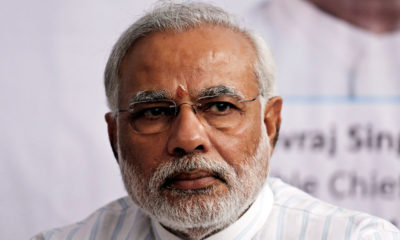World
Nepal-India pipeline to be finished in 30 months: Minister

Kathmandu: India and Nepal on Monday inked an agreement for a 41-km Amlekhgunj-Raxaul petroleum pipeline, with visiting Indian Minister Dharmendra Pradhan saying its construction would be completed within 30 months.
Petroleum and Natural Gas Minister Pradhan and his Nepalese counterpart Sunil Bahadur Thapa inked the Memorandum of Understanding for the construction of the pipeline from Raxaul (India) to Amlekhgunj (Nepal) and re-engineering the Amlekhgunj Depot and allied facilities.
Amlekhgunj has the largest petroleum depot in Nepal owned by Nepal Oil Corporation.
“Indian Oil Corporation is capable of executing the project and we expect it will be completed before the set deadline of 30 months,” he said after singing the MoU.
On behalf of the Indian government, the IOC will construct the pipeline and re-engineer Amlekhgunj depot and allied facilities. The project will be completed in two phases. In the first phase, the pipeline would be constructed.
The minister suggested to the Nepalese side to extend the pipeline up to Kathmandu, adding that India would extend all possible help to Nepal in this regard.
The IOC would bear the cost of Rs.200 crore for the first phase. A long-term contract (initially for five years, extendable for two terms of five years each) between the IOC and Nepal Oil Corporation would be in place for the project.
The government of Nepal requested for the construction of this pipeline during Prime Minister Narendra Modi’s visit to the Himalayan nation on August 3-4, 2014.
Nepal Oil Corporation would contribute Rs.75 crore for re-engineering the Amlekhgunj depot.
While 39 km of the proposed pipeline lies in the Indian territory, remaining two km is in Nepal.
World
Lockdowns in China Force Urban Communities to Defy Censorship and Vent Frustration Online

Shanghai’s rich middle class is leading a wave of online dissent over the strict and prolonged lockdowns imposed in various parts of the country. Chinese internet censorship is struggling as patience is wearing thin in many urban centers, coming up with creative forms of online protests.
Social Media Posts Revealing Lockdown Tension in Shanghai
Drawn-out lockdowns are nothing new in China as authorities insist with the nation’s zero-Covid policy since the start of the pandemic. Currently over This time around, however, metropolitan areas like Shanghai are increasingly difficult to keep quiet, given that its more than 25 million residents have seen weeks of total isolation along with food shortages and many other service interruptions.
Dozens of towns and reportedly over 300 million Chinese citizens have been affected by lockdowns of different severity. As expected, urban netizens have been most outspoken over their difficulties by finding creative ways to get around state censorship and bans placed on topics, news comments and spontaneous campaigns.
Shanghai residents have been using mobile proxies and hijacking seemingly unrelated hashtags to talk about healthcare issues, delivery failures and the overall severity of their situation. The “positive energy” that the Chinese government wants to transmit during the recent prolonged series of lockdowns does not come naturally to those counting food supplies and online censors are working hard to filter words, trending topics and undesired social media sharing.
WeChat groups and message threads are under constant monitoring. Posts questioning the zero-Covid approach have been quickly deleted, including by leading Chinese health experts like Dr. Zhong Nanshan. Video footage is soon censored and protests and investigations are quickly made to disappear.
Where this has not worked, officials have exposed banners with warnings and outright threats like “watch your own mouth or face punishment”, while drones have been patrolling the city skies. Yet, if anything, this has led to further tensions and unspoken confrontation with Shanghai’s educated and affluent middle class.
Creative Online Solutions Harnessing Civic Energy
Announcements by Chinese social media that they would be publishing the IP addresses of users who “spread rumors” have not helped either. Tech industry research has shown that much of Asia’s tech-savvy population has a habit of using mobile proxies and other privacy tools, quickly finding workarounds to browse the internet freely and talk to the world about the hottest topics.
The sheer volume of forbidden posts is already a challenge for the very censorship system, experts explain. Unable to track all trending hashtags, state workers overlook topics that speak about the US, Ukraine or other popular news. Linking human rights elsewhere to their situation, Chinese online dissidents establish their informal channels and “hijack” the conversation to share personal or publicly relevant information about the Covid suppression in their town.
Sarcastic and satirical posts still dominate. Others hope to evade the censors by replacing words from famous poems or the national anthem. One thing is certain – social media, when harnessed with the right creativity, has proven its ability to mount pressure on the government in even some of the most strictly controlled tech environments like China.


















